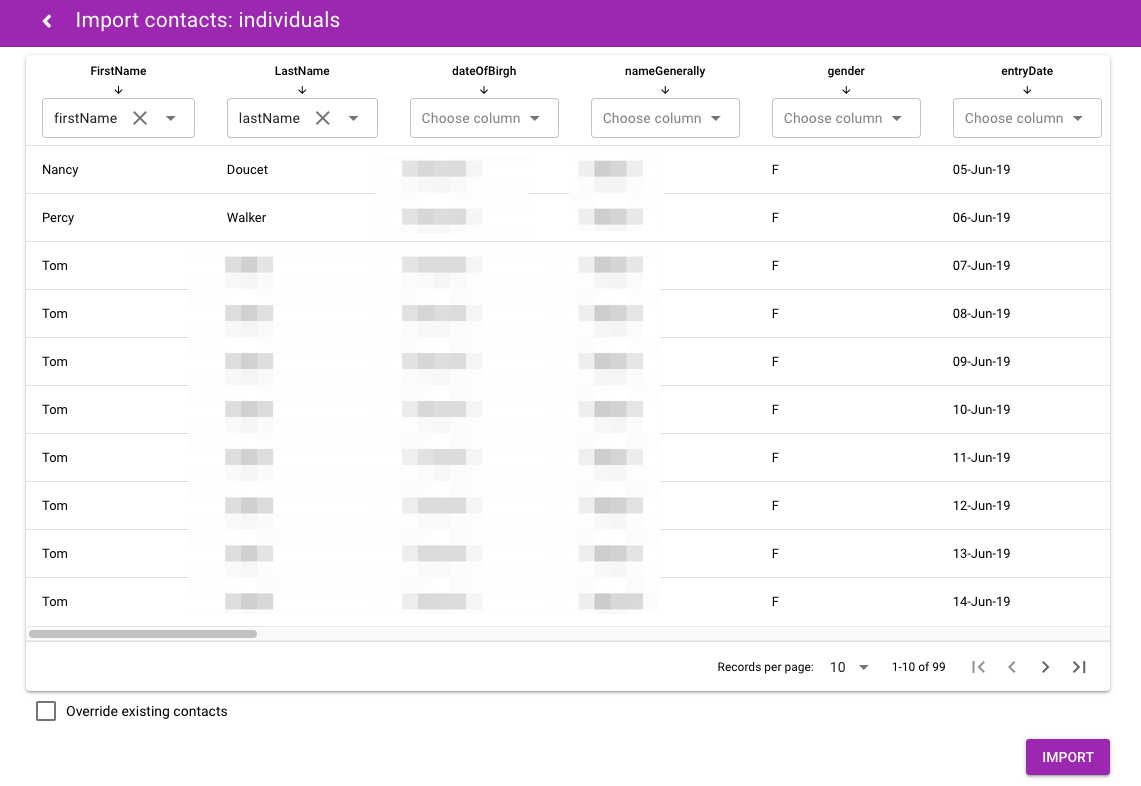Beyond questionnaires – the benefits of using data onboarding tools
In today’s digital landscape, software companies are constantly competing to gain new clients and maintain existing ones. One way they can stand out from the competition is by offering clever data onboarding tools. These tools help software companies entice clients away from competitors by making it easier to import, organize, and analyse customer data. But the same tools can be used by professional services firms as well. In this article we’ll discuss what data onboarding tools are as well as their benefits.
What is data onboarding?
Data onboarding refers to the process of importing customer data from various sources into a centralized system for analysis and use. It is a critical component of customer onboarding, which involves the entire process of introducing a new customer to a business and ensuring that they are set up for success. Traditionally, data onboarding tools have been used heavily by marketing professionals to import their customer data for analysis or mass communication. Companies like Salesforce, Oracle or Adobe (and a number of smaller contenders) offer such features are part of their marketing automation suites.
Nowadays, most reputable software vendors who sell to the wider professional services world offer data onboarding tools that let their customers set up their accounts faster: either by pasting XLS or CSV data into an editor or by uploading such files to a wizard which then lets users map their data into a vendor-defined structure.
This process has many benefits: rather than paying for expensive data transfer tools, software vendors can take advantage of simple onboarding wizards. If they own that technology that is. This may sound surprising but not all vendors own them. Some use third party companies specialising in data onboarding tools that are sold as white-label solutions. If used properly, that approach does not cause an issue, however using data onboarding tools in ‘cloud-only’ mode causes new data compliance issues which may not be obvious to users.
If one uploads a contact list through a CSV importer, one expects that the data goes straight to their secure account with the vendor. Knowing that the data actually travels through a server of another company, possibly through different jurisdictions, may raise some eyebrows. Such implementations impose additional due diligence requirements on software vendors (when signing up to a third party data onboarding solution) as well as on their prospective clients (who, if they discover the situation, need to get comfortable with it as well).
Data onboarding at MyDocSafe
That is why building your own tools simplifies the matter dramatically: no due diligence on new subcontractors, no questions on data security compliance. We at MyDocSafe took that view and decided to build our own tools. Importing contacts, for example, is a drag/drop/map process that is simple and incredibly fast. However, we also believe that clever data onboarding tools should benefit our clients when they interact with theirs. If you are an insolvency practice, an M&A consultancy conducting due diligence on a potential acquisition or a wealth manager onboarding a client with a complex portfolio, exposing data onboarding tools to your clients might simplify the experience dramatically.

Key benefits
One of the most significant benefits of automated data onboarding is that it can help businesses streamline the customer onboarding process. By automating the collection and processing of customer data, businesses can reduce the time and effort required to set up new accounts and ensure that customers have access to the resources they need to get started. This can lead to a better overall customer experience and increase customer retention rates.
Automated data onboarding can also help businesses reduce errors and improve data quality. Manual data entry can be prone to errors, such as typos and duplicate entries, or lack of entries. By automating the data onboarding process, businesses can eliminate these errors and ensure that customer data is accurate and up-to-date. This, in turn, can help businesses make more informed decisions and provide better customer service.
Automated data onboarding is a critical component of customer onboarding that can benefit businesses in a variety of ways. By streamlining the process of collecting and processing customer data, businesses can improve ROI, customer retention rates, reduce errors, and gain a better understanding of their customers. As businesses continue to focus on improving the customer experience, automated data onboarding will likely become an increasingly important tool for achieving success.
In summary, using data onboarding by non-software clients include:
- faster data collection times that speeds up time to revenue
- better quality of imported data that cuts data cleansing cost
- lower customer servicing cost
- higher customer satisfaction
MyDocSafe can build bespoke data onboarding tools based on its proprietary platform. If you would like to explore how such tools might benefit you – do get in touch by writing to sales@mydocsafehq.com. Alternatively, take a look at our powerful questionnaires and try them out for free using our trial.

And in case you were wondering, the featured image was generated by Midjourney AI. It’s not easy to learn the /imagine speak. But it’s great fun!
